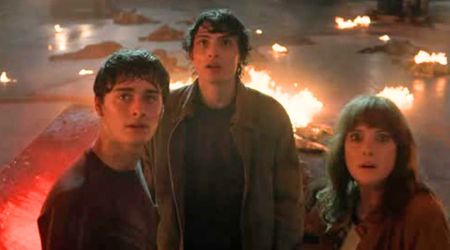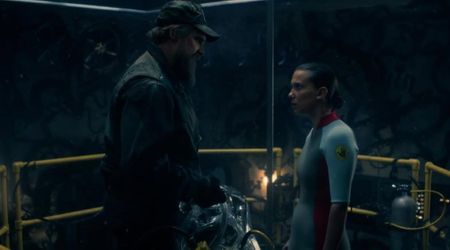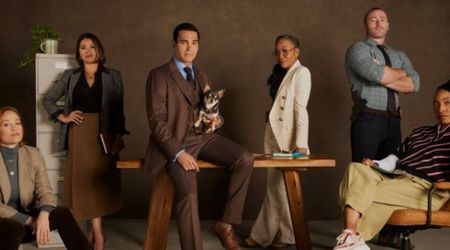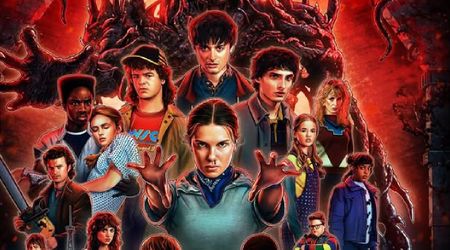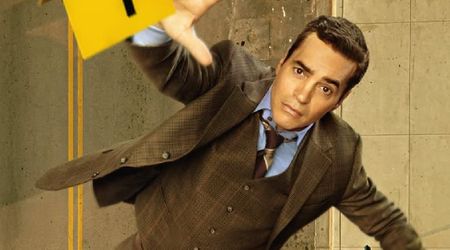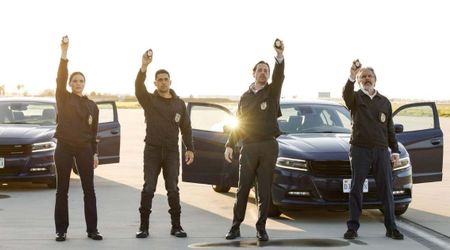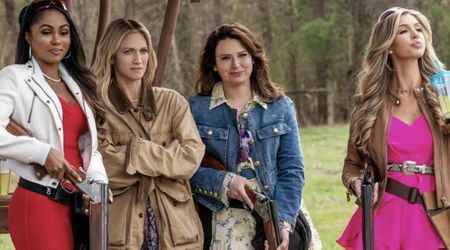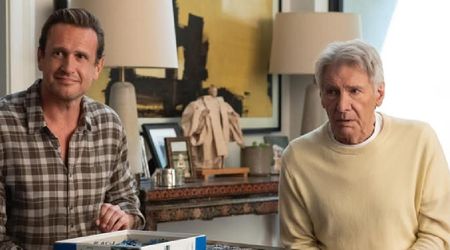George Floyd death: Examining police brutality in shows like ‘#FreeRayshawn’, ‘The Good Fight’ and ‘The Wire'

George Floyd’s death has once again triggered a conversation around police brutality and systemic racism in the U.S. While examining both these ideas -- and they are both deeply related to each other -- it’s difficult to discount the efficacy of popular culture in how either is viewed.
In the United States, be it television or cinema, police have always been shown, ultimately, as the good guys. The sheer number of police procedurals and dramas should give you some clue. Over the years, there has been a somewhat tonal shift regarding police violence.
Even in procedurals and films, especially in the last decade, we have seen this often difficult topic being examined. There are certain limitations to it, of course. In shows and films, when police brutality and racist cops are shown, they are often portrayed as outliers in an otherwise monolith of integrity and principles. It’s good cop versus bad cop.
But there have been exceptions. We will then look at three different shows -- one from 2002, one from 2017, and one from 2020 -- all of which examine police brutality and racism in a good way and all from different perspectives. David Simon and Ed Burns’ HBO crime drama ‘The Wire’, examines police brutality from within the police system. Robert King, Michelle King, and Phil Alden Robinson’s ‘The Good Fight’ looks at it from outside, through a legal firm. And Antoine Fuqua’s ‘#FreeRayshawn’ examines it from the perspective of the victim.
‘The Wire’, by all accounts, is an exemplary work of storytelling. Based in the city of Baltimore, it examines organized crime, race, policing, addiction, poverty, and governance. While the police force is ubiquitous to the show, there is seldom any pretense of it being a force of good. Corruption is rampant. Systems are outdated. And there is always the prioritization of good public perception as opposed to good police work.
One of the better examples of police violence in the show (and there are too many), is in the first season. When three cops, Ellis Carver (Seth Gilliam), Thomas 'Herc' Hauk (Domenick Lombardozzi), and Roland 'Prez' Pryzbylewski (Jim True-Frost), are out drinking, dissatisfied with their present assignment, they decide to shake things up.
They visit the “projects”, low-income housing, primarily occupied by African-American families, in the middle of the night, and shout, asking for the drug dealers to come out. Prez notices a teenager leaning on his car, and he asks him to leave. When the teenager gives a cocky response, Prez cold-cocks him with his service weapon. What happened next was pandemonium. The occupants of the building throw bottles and rocks and TVs at the cops, leading them to run away.
They later find out that the teenager Prez hit lost his eye. Prez, already seen as inept and the product of nepotism in the department, was taken off the streets. But he wasn’t fired. He was later reinstated, but by that time, Prez had found his calling as a cryptographer and surveillance man. ‘The Wire’ goes to a certain length to show just how Prez was exonerated. His father-in-law was a Police Major. His boss helped him get his story straight (against his better judgment), and the biggest reason was made silently obvious: Prez was white.
The teenager, on the other hand, was left half-blind. He never found justice. He never found redemption. Even if Lieutenant Cedric Daniels (Lance Reddick) apologized to him. ‘The Wire’ tells the story of the city, and in this case, the story was as old as racism in the U.S.
In ‘The Good Fight’, police brutality is an ongoing feature. The African-American law firm Reddick, Boseman, and Kolstad made a point of taking police brutality cases in Chicago. Even the very first episode, which begins with the swearing-in ceremony of Donald Trump, focuses on a case where an alleged carjacker was brutalized by cops to such a degree that he lost his ability to walk.
‘The Good Fight’, even if it doesn’t actively portray brutality cases all the time, makes a constant effort to show how the legal system works and the pitfalls it has. It shows how prosecutors are more often inclined to make deals with white criminals, but jail black ones. It shows the inbuilt biases departments of justice have and it examines in detail the levels they go to make sure they aren’t seen as racist, instead of making the effort to sensitize policemen more.
But the real parallels we can see are in ‘#FreeRayshawn’. Set in New Orleans, it follows Rayshawn (Stephan James), a young, black Iraq War veteran who was allegedly set up by the police in a drug case. As he runs for his life and takes refuge inside his apartment building with his girlfriend and child, cops and the S.W.A.T. team show up outside his door, ready to storm his home.
The only reason Rayshawn manages to not get killed is by live-streaming his ordeal. The camera bears a huge factor in both George Floyd’s death and the survival of Rayshawn. Had it not been for a camera, no one would have known how this happened. Had it not been for the visceral images, this level of global outrage could not have been imagined.
‘#FreeRayshawn’ makes a constant point of casting the light on two other valuable aspects. One, the internal biases of policemen. And two, the efficacy of a community-wide protest as a response to police brutality and violence and racism.
Each of these shows helps deconstruct certain ideas. And they do so well. But three shows out of hundreds is not a great number. This is not to imply that other shows haven’t done this well. Rather, it only necessitates the importance of popular culture in this conversation.

